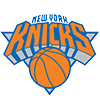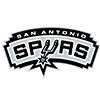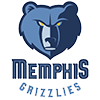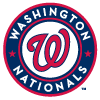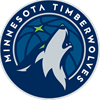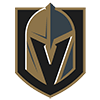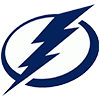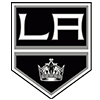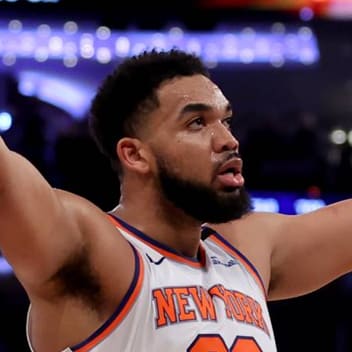Early-season fantasy basketball trades separate contenders from pretenders. Shooting percentages haven't normalized, roles remain fluid, and league-mates overreact to hot starts or cold streaks. Smart managers target buy-low candidates with strong underlying metrics, cash in on unsustainable efficiency, and hold established players through shooting slumps. Understanding usage rates and minute trends reveals which performances are real versus noise. Act fast before the market catches up.
Buy
Cooper Flagg, Dallas Mavericks 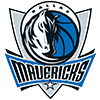
As the top pick in the draft and one of the more highly regarded prospects in recent history, Flagg entered the league with significant fantasy expectations. He was going in the third or fourth round in many leagues, which means he's someone that fantasy managers intended to build their team around. The early returns have not been great, with him averaging 13.6 points, 6.3 rebounds, 2.9 assists and 1.1 three-pointers. His biggest issue has been shooting only 38.8% from the field.
Since Kyrie Irving (knee) is out, the Mavericks have been deploying Flagg at point guard for stretches. That's a difficult assignment for any rookie, let alone one who is more suited to be a forward at 6'9". Despite the early growing pains, Flagg has massive upside. Once Irving comes back, Flagg can all settle back into a more suitable role playing the wing. Fantasy managers who drafted him early might be frustrated with their initial returns, so there is a possible buy-low window here.
Matas Buzelis, Chicago Bulls 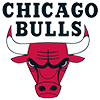
Buzelis was widely regarded as one of the top breakout candidates
Early-season fantasy basketball trades separate contenders from pretenders. Shooting percentages haven't normalized, roles remain fluid, and league-mates overreact to hot starts or cold streaks. Smart managers target buy-low candidates with strong underlying metrics, cash in on unsustainable efficiency, and hold established players through shooting slumps. Understanding usage rates and minute trends reveals which performances are real versus noise. Act fast before the market catches up.
Buy
Cooper Flagg, Dallas Mavericks 
As the top pick in the draft and one of the more highly regarded prospects in recent history, Flagg entered the league with significant fantasy expectations. He was going in the third or fourth round in many leagues, which means he's someone that fantasy managers intended to build their team around. The early returns have not been great, with him averaging 13.6 points, 6.3 rebounds, 2.9 assists and 1.1 three-pointers. His biggest issue has been shooting only 38.8% from the field.
Since Kyrie Irving (knee) is out, the Mavericks have been deploying Flagg at point guard for stretches. That's a difficult assignment for any rookie, let alone one who is more suited to be a forward at 6'9". Despite the early growing pains, Flagg has massive upside. Once Irving comes back, Flagg can all settle back into a more suitable role playing the wing. Fantasy managers who drafted him early might be frustrated with their initial returns, so there is a possible buy-low window here.
Matas Buzelis, Chicago Bulls 
Buzelis was widely regarded as one of the top breakout candidates this season. He didn't play much to begin his rookie season with the Bulls, but once they moved him into the starting lineup, his fantasy upside began to show. With a secure spot in the starting lineup entering this season, it looked like full-steam ahead for Buzelis when he recorded 21 points, six rebounds and three blocks in his season opener versus the Pistons. However, he has averaged a more modest 13.8 points, 4.2 rebounds, and 0.7 blocks since.
Buzelis hasn't contributed a ton outside of points and three-pointers. It is encouraging to see him shooting 46.9% from the field and 42.4% from behind the arc. It's also good to see him logging 29 minutes per game. If not for a rough game against a very good Magic defensive team in which he fouled out in six minutes, his overall numbers for the season would look better. Big things could still be on the horizon.
Sell
RJ Barrett, Toronto Raptors 
The addition of Brandon Ingram figured to cut into Barrett's scoring opportunities. However, Barrett is still averaging 20.8 points per game, which is nearly in line with his average of 21.1 points last season. However, it's important to point out that Barrett is shooting 55.4% from the field. He has shot 44.3% for his career, so some significant regression could be coming. His usage rate has indeed dipped significantly, falling from 28.7% last season to 23.3% through eight games.
Barrett averaged 6.3 rebounds and 5.4 assists last season, but is down to 4.9 rebounds and 3.5 assists per game this season. If not for his significant increase in efficiency, his overall numbers would have taken a big step backward from last season. Trade him now before his shooting percentage begins to normalize.
Quentin Grimes, Philadelphia 76ers 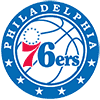
Grimes helped many fantasy managers down the stretch last season. Over his final 25 games, he averaged 23.0 points, 5.2 rebounds, 4.6 assists, 1.6 steals and 3.1 three-pointers. With the 76ers dealing with so many injuries, he logged 34 minutes per game during that span and was often their top scoring option. Despite Tyrese Maxey and Joel Embiid being back in the fold this season, Grimes has averaged 17.0 points, 4.4 rebounds, 5.0 assists and 2.7 three-pointers over their first seven games.
Helping Grimes has been him playing 32 minutes per game. That type of workload might not be sustainable now that Jared McCain is back. Grimes played 30 minutes in McCain's first game of the season Tuesday against the Bulls, finishing with 10 points, three rebounds and four assists. Paul George (knee) should also return at some point down the road. It's possible that Grimes could be in the 25-to-28-minute range moving forward, so his fantasy value might have already peaked.
Hold
Derrick White, Boston Celtics 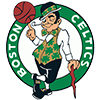
White looked primed for an expanded role entering the season. Jayson Tatum (Achilles) is out, and the Celtics traded away Kristaps Porzingis and Jrue Holiday. Other than Anfernee Simons, the Celtics didn't make any noteworthy additions. That left White with the potential to set a new career high in points after he put up 16.4 points per game last season.
As many expected, the added shots have been there for White. His usage rate is 23.6%, which is up from 19.8% last season. The issue is, him shooting 31.0% from the field and 26.3% from behind the arc has limited him to 14.4 points per game. Entering this season, White had shot at least 38.1% from behind the arc in each of his first three full campaigns with the Celtics. As his three-point percentage improves, so should his scoring contributions. Don't panic about his slow start and trade him at a discount.
Desmond Bane, Orlando Magic 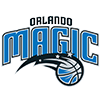
The Magic had a clear need in the offseason and it was to improve their three-point shooting. That made the acquisition of Bane seem like a perfect fit. He has averaged at least 2.4 three-pointers in each of the last four seasons, and he has shot 40.8% from behind the arc for his career. The surprise for the Magic and fantasy managers alike is that Bane is shooting 28.6% from deep across his first eight games. That has left him to average just 13.9 points per game.
If there is a bright side to Bane's slow start, it's that his usage rate is 22.7%. That's not too far off from his mark of 23.3% with the Grizzlies last season. It will be difficult for him to average at least 5.0 assists for the third straight season playing alongside good passers in Paolo Banchero and Franz Wagner, but much better shooting production should be in the cards for Bane.








